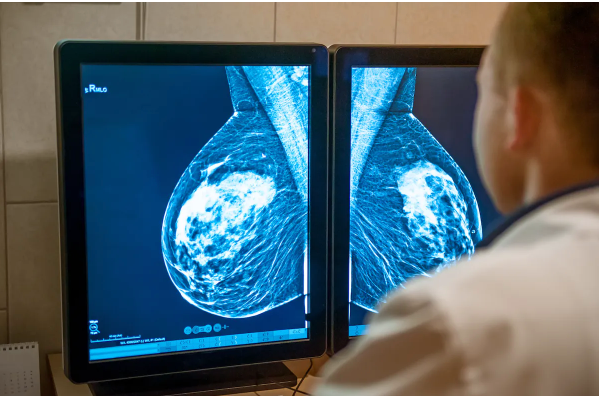Article
New Technology Can Identify Residual Breast Cancer During Initial Lumpectomy to Reduce Need for Second Surgery
Author(s):
The system is considered effective at identifying residual breast cancer following surgical resection.
The direct visualization system (DVS; Lumicell) may safely and effectively identify residual breast cancer during initial lumpectomy, according to data from the Investigation of Novel Surgical Imaging for Tumor Excision (INSITE) trial (NCT03686215) published in NEJM Evidence and presented at the American Society of Breast Surgeons (ASBrS) annual meeting in Boston, Massachusetts.
Expert presents Updates in Early-Stage Breast Cancer from the HOPA 2023 Annual Conference. Credit: okrasiuk - stock.adobe.com.

The DVS identified residual breast cancer that would not have been recognized by standard pathology assessment in approximately 8% of patients. The DVS was also able to identify residual tumors that measured 1 to 13 mm in areas of low- and high-grade tumor across tumor types.
“The results of the INSITE trial suggest that a more complete breast cancer resection may be achieved with [DVS],” said lead study investigator Barbara Smith, MD, PhD, director of the Breast Program at Massachusetts General Hospital and professor of surgery at Harvard Medical School, in a press release. “Given the low complication rate, minimal added operative time and, most importantly, the discovery of additional cancer left behind after a lumpectomy, [DVS] has the potential to be a critical adjunct to enhance standard practice for [patients with breast cancer].”
Prior to DVS, there was no technology to locate and remove residual cancer during the first lumpectomy surgery; standard of care involved surgeons and pathologists looking at the margins of surgically removed tissue to estimate if there was residual cancer, which is only identifiable after surgery. Further, patients with positive margins had residual tumor that needed to be removed with another surgery.
The phase 3 INSITE trial measured the safety and efficacy of DVS in 406 patients with primary invasive breast cancer and/or ductal carcinoma in situ (DCIS). DVS, which was used on 357 patients, allowed surgeons to locate and remove residual tumor in 27 patients (7.6%).
The DVS system had 85.2% specificity and 49.3% sensitivity in detecting residual cancer. The DVS system also allowed for the conversion of positive margins (residual tumor) to final negative margins (no residual tumor) in 14.5% of patients, helping them to avoid needing a second surgery.
INSITE also evaluated the safety of pegulicianine (Lumisight; Lumicell), an investigational optical imaging agent used to see the lumpectomy cavity—it is intended to be used with DVS. Patients suffered from a low rate (0.5%) of serious adverse events (AEs) on pegulicianine, leading to the FDA granting it Fast Track designation. Pegulicianine was submitted for final approval in March 2023, and DVS was submitted for premarket application to the FDA in April 2023.
“DVS is the first technology designed to enable intracavity examination during the initial lumpectomy surgery, and results of the INSITE study provide evidence of its ability to enable removal of additional residual cancer,” Jorge Ferrer, PhD, senior vice president, clinical research and strategy at Lumicell, and co-developer of Lumicell DVS technology, said in the press release.
Reference
Lumicell™ DVS Pivotal Trial Results Published in NEJM Evidence and to Be Presented at ASBrS Assess Safety and Effectiveness of System for Identifying Residual Breast Cancer During Lumpectomy. News Release. April 28, 2023. Accessed on May 1, 2023. https://www.businesswire.com/news/home/20230427005034/en/Lumicell%E2%84%A2-DVS-Pivotal-Trial-Results-Published-in-NEJM-Evidence-and-to-Be-Presented-at-ASBrS-Assess-Safety-and-Effectiveness-of-System-for-Identifying-Residual-Breast-Cancer-During-Lumpectomy





